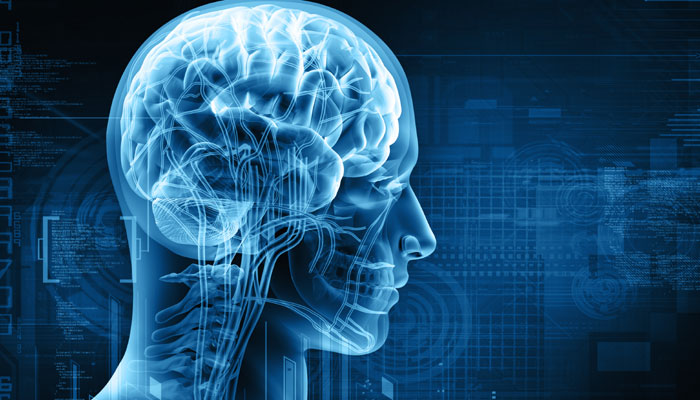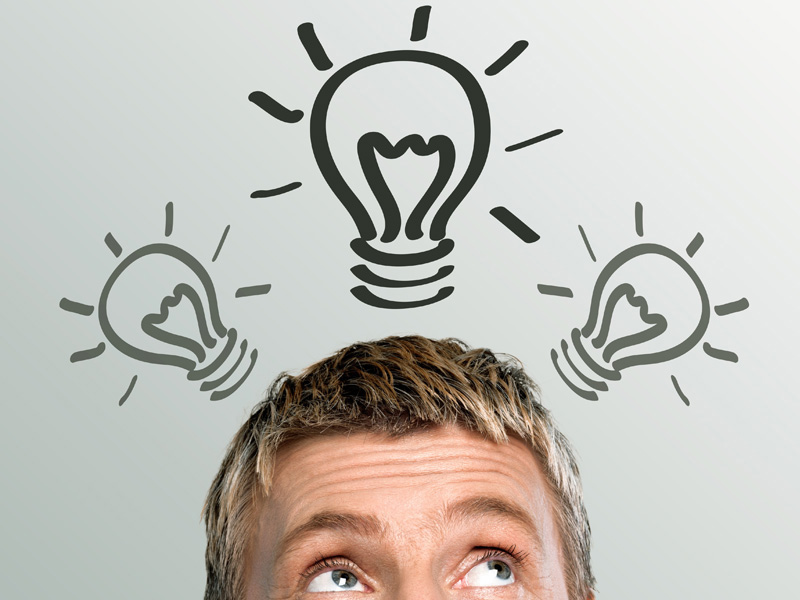How to remove muscle blocks. Emotional tension and muscle clamps
Muscle clamps are a very unpleasant phenomenon. It interferes with normal life, causes discomfort, and when neglected, causes unbearable pain.
You can deal with these sensations with massages and analgesic ointments or pills, but it is better to find the causes that cause muscle clamps. Psychosomatics helps to understand this disease and eliminate them in the bud.
What causes muscle clamps
The physical strength of a person depends on the muscles, therefore, when they are cramped or constricted by pain, a block arises for some action. The main message: « I don’t want to move, I don’t want to do anything. ” Most likely, you need some new, non-standard solution, but it makes you fear.
Muscles are associated with forward movement, and clamping in them means resistance, unwillingness to move from the usual point. This resistance is accompanied by emotional blocks that cause weakness, lower muscle tone. Perhaps you simply do not have enough incentive, a powerful desire that will help you focus on the result, forgetting about the action for a while.
There is another reason for muscle clamping: the inability to perform the desired action. Since in the modern world we are forced to restrain many impulses, from the inability to splash out emotions, the muscles “stiffen”, freeze in a certain position.
From the point of view of psychosomatics
Since your main fear is the unknown, in order to get rid of pain and discomfort, you need to analyze what exactly is required of you and understand what result awaits you.
Try visualizing your fears. Divide the paper into two parts and write down in one column what you will get as a result of success, and in the second - what you will lose if you fail. Feel the emotions that you will experience in both cases. Understand whether they are so scary as you thought at the beginning, and what outweighs: joy or disappointment.
If, on the contrary, you feel the need to perform a prohibited action, to throw out an emotion that cannot be shown in society, find a physical discharge. It’s even suitable to beat a pear in a trite way, but at the same time you need to very clearly imagine what causes your emotions.
Gradually, you will feel how the clamp leaves the muscles. To make the effect stronger, do a little meditation. Sit comfortably and freely, turn on calm music without words and mentally walk through your entire body, from the tips of your toes to the top of your head. Feel all the muscles and feel how they relax.
What does clamping certain muscles mean?
It also happens: outwardly in life everything is in order, but for some reason muscle pain still torments. This is a hint that at the subconscious level we experience stress, disagreement with the situation and unconsciously resist it. Depending on the location of the pain, you can understand where to unearth the essence of the problem.
Cervical and shoulder grip
The pain and discomfort in the cervical and shoulder parts is explained by the fact that someone “sits on the neck” of a person, or he puts too much on his shoulders. Constant anxiety about someone, the need to care and support, leads to the fact that there is a feeling of constant heaviness.
But keep in mind that often this burden is contrived. Overly responsible people, inclined to rush to help without hesitation and desperately solve their problems and those of others, are constantly under the yoke of unnecessary responsibility.
It is worthwhile to figure out what to worry about and what not, how the clamps will begin to disappear.
Abdominal forceps
The word "belly" in Russian also means "life". Remembering this at the subconscious level, a person is internally pinched when he feels a danger to his health and even life.
To eliminate such a clamp, it is necessary to assess the situation soundly and understand that in fact, nothing is in danger.
Leg clamps
The hardest thing with legs. In primitive times, only legs saved a person from dangers, and today they are the main support. Clamps occur if the earth “leaves” from under the feet, a person does not feel confident in a particular moment and is worried about the future.
So, from the point of view of psychosomatics, the awareness and understanding of your fears and the ability to change your thinking will help to cope with muscle clamps.
Muscle clamps and blocks are unpleasant phenomena that some people suffer from. At these moments, they experience significant discomfort, and in neglected situations an almost unbearable pain is possible. Faced with such situations, people try to massage the affected areas, rub them with warming ointments, use painkillers, but all this does not help. More precisely, there is an effect, but it is short-term and after a short period everything returns. To overcome the neuromuscular block forever, you need to identify its true cause and learn how to deal with it correctly.
Muscle clamp - what is it?
There are many causes of neuromuscular block, but to understand them? need to find out what kind of violation it is? In fact, a muscle block or muscle carapace is the tension of a particular muscle or a whole group that does not relax even at rest.
Often this muscle is hypertrophied and blood passes through it with difficulty. Accordingly, the efficiency of functioning is reduced. In addition, the clamped muscle hardens and disrupts the normal functioning of the whole body. With any mobility, severe pain can occur.
It is noteworthy, but when a muscle block holds a certain limb or part of the body, people are in no hurry to consult a doctor. They try to find the cause of the problem themselves, gradually getting used to the discomfort and continuing to live with muscle tension. This state of affairs leads to various disorders and diseases:
- clamping of internal organs;
- flat feet;
- curvature of the spinal column.
What can be muscle clamps from?
You will be amazed to learn about the real causes of muscle tension. One of them is connected with psychosomatics. The theory was first considered by a student of Wolf Messing and psychologist Wilhelm Reich, who founded the school of psychoanalysis.
The human body is a mirror of psychological disorders. Based on this, Reich concluded that each psychological disorder leaves certain marks in the body, which are manifested by muscle stiffness.
If all this is simplified, the following picture is obtained: if one does not know how to control emotions and restrain them without showing others, a person is forced to suppress them. This leads to chronic overstrain of individual muscle groups. In this regard, over time, muscle clamps will appear that act as protective reactions to unpleasant sensations.
The theory is confirmed by reviews of many patients of Reich. They admitted that in their youthful years they suppressed aggression and other emotions, holding their breath, twisting their hands, by tensioning the abdominal muscles and other actions. With their regular repetition for 10-20 years, muscle blocks will be inevitable, and psychosomatic disorders will follow.
There are many examples where people cause muscle clamps with their actions. For example, the habit of smiling without joyful emotions causes facial wrinkles and even impairs vision. Fear forces one to hold one’s breath, causing hand tremors and helping to pull the head into the shoulders. Against this background, rigidity of the muscles of the cervical-collar part will occur.
If you work hard, trying to achieve certain goals, the body may shrink as a cause. This will cause stiffness of the muscles and lead to the appearance of muscle carapace. Blocks squeeze blood vessels, and internal organs cease to receive nutrients in the right amount. This contributes to metabolic disorders, weakened immunity and various diseases, including hypertension, which we have already covered on our website, etc.
Clinical manifestations of blocks
The muscle block always causes pains that are sharp, aching and unbearable. Sometimes they suddenly arise, and at other times they gradually increase, making themselves known in advance. Manifesting in a certain area, the adjacent muscle group can be affected by pain. For example, after some time, large areas of your body begin to hurt and it will be more difficult to solve the problem.
Overstretched muscles do not allow the body with limbs to function normally or limit their mobility. A spasm of several muscle groups can lead to immobility, shortness of breath and other troubles.
Thus, muscle clamp becomes a signal about the defeat of the body in one place or another. Often, such spasms lead to a violation of the water-electrolyte balance. Also, muscle blocks can confirm the instability of the psycho-emotional sphere. Be that as it may, muscle clamping, like pain, is an important symptom that cannot be ignored. You need to contact the doctor with the first unpleasant sensations when moving and try to identify the real cause of the violation.

What are muscle blocks harmful to?
As already mentioned, spasmodic muscles in different parts of the body can be dangerous. They compress blood vessels and compress nerve endings. This begins the process of disruption of energy-informational metabolism and tissue nutrition. For example, in the cervical zone the vagus nerve is usually compressed, along which impulses to the pancreas cease to pass. This violates the innervation of the internal organ, leading to enzymatic disorders in the digestive tract.
A dangerous consequence of the neuromuscular block is also that the spasmodic muscle is contracted, therefore it consumes valuable ATP. Thus, the body spends excess energy to maintain muscle tension, which is not useful.
Given that the muscle block sometimes holds tension in large areas, and this lasts long enough, energy costs can be incredibly large by the standards of the human body.
In what areas do muscle blocks occur?
Clips can occur in different parts of the body, leading to different deviations in this zone. Specialists practicing in the field of body-oriented therapy most often have to deal with muscle blocks in the following places:
Eyes. Block in the eye area is usually manifested by a lack of mobility in the forehead. There is an effect of a wax face, like a mask on it. Such a block is formed usually due to frequent containment of resentment, and to normalize the situation, gymnastics for the eyes or their wide opening is required. The essence of exercises in the forehead and eyelids.
Mouth area. Muscle blocks often cover the muscles of the chin and throat, and also go to the back of the head. For example, jaw pain can occur due to constant containment of crying, anger, etc. To relieve such tension, you need to make grimaces, imitate crying and move your lips, additionally do facial massage.
Neck. Blocks can affect the deep muscles of the neck as well as the tongue. As in the previous case, spasm occurs as a result of restraining anger, screaming and other similar emotions. To eliminate the clamp, you need to perform tilting the head in different directions, rotation and other movements. Crying and regular singing also help.
Chest area. The chest also refers to areas affected by muscle blocks. This segment includes the shoulders, arms, pectoral muscles, and shoulder blades. Violations are possible due to the constant holding of breath while suppressing all kinds of emotions, be it anger, resentment, crying or fright. All kinds of breathing movements will help dissolve the spasm.
Aperture part. Myocardium, lungs and other organs fall into this area. Spasm in this area can be caused by frequent holding of breath in an effort to restrain anger. This clamp is considered one of the most difficult to remove which is needed.
Abdomen It includes the muscles of the abdomen and back. Strain of the abdominal muscles with the subsequent block occurs when there is a fear of attack or because of a feeling of anger. You can fight these spasms on your own using a special exercise. To perform this exercise, you need to alternately strain and relax the abdominal muscles, raise your arms up, stretching your torso, and make upper body turns to the sides.
Pelvic area. This area includes the hip muscles of the hip and leg muscles. The stronger the block and the larger the affected muscle group, the stronger the pelvis will shift back. Practice proves that blocks in this zone are the most common and bring maximum discomfort. They appear with excessive excitement, anger and pleasure. Yoga clips help to remove the clamps.
Ways to fight muscle blocks
Doctors who understand body-oriented psychotherapy recommend conservative muscle blocking. They mainly include physical therapy, yoga, sports. It is also important to learn how to properly express and, if necessary, control your own emotions.
In advanced cases, treatment is not complete without a non-depolarizing muscle relaxant. With their help, they quickly get rid of discomfort, removing any pain. We do not recommend you to self-medicate with frequent muscle blocks - an appropriate course of therapy should be prescribed. It is important to identify the exact cause of the violation, after which the doctor will give useful recommendations.
You can get rid of superficial muscle clamps by auto-training, and fight with deep blocks using the technique of holotropic breathing. Also useful are breathing exercises and. Sometimes you have to turn to a therapist who understands the internal causes of muscle clamps and eliminates them.
Guys, we put our soul into the site. Thank you for
that you discover this beauty. Thanks for the inspiration and goosebumps.
Join us at Facebook and In contact with
Sometimes at the end of the day we feel aching pain in the muscles, we can not straighten or turn our heads. The reason for this is the “muscle carapace,” as Wilhelm Reich called muscle spasm, the first to notice a connection between stress and the body’s reaction to it. He attributed this to a person’s habit of keeping everything in himself, his inability to express emotions. All this leads to the fact that any psychological problem will be reflected in the body by the muscle block.
We are in website found 6 exercises aimed at removing these blocks. Their implementation will not take you much time, and the result does not take long to wait.
1. If the middle part of the back and lower back hurts
Constant tension and tightness of the spinal muscles can lead to various diseases: osteochondrosis, muscular blockade of the discs, intervertebral hernias, curvature of the spine.
Pinched vertebrae can also cause heart pain, headache and dizziness, and visual impairment.
How to relieve tension in the back
Exercise will help you relieve pain in your back muscles.
- Stand up straight. Raise your hands up and then lay them behind your head.
- Lean back. The back should take the shape of an arch.
- Return to starting position.
Repeat 5 times.
2. For pain in the neck and upper back
Most likely, while reading this article, you are sitting at a computer. Evaluate if your neck is in the right position:
- shoulders should not be raised up;
- trapezoid should not be strained.
Tension in the trapezium often occurs due to stress and fatigue, the habit of slouching or constantly raised shoulders.
How to get rid of neck and shoulder pain
The neck is the part of the body that usually reacts first to stress. The tension in it negatively affects the work of blood vessels and nerves. Less necessary oxygen and nutrients enter the brain, muscles weaken.
To prevent this from happening, do the following:
- Stand straight, feet should be shoulder width apart.
- Put your hands on your belt and tilt your head forward, and then pull it back.
Repeat 8 times.
How to remove the clamps from the neck and shoulders
The factors that provoke pain in the trapezius muscle can be hypothermia, insufficient warming up before training, performing monotonous movements, and carrying heavy bags and backpacks. This is fraught with myositis - inflammation of muscle tissue.
- Straighten up, put your hands behind your head.
- Tilt your neck to the right, then to the left.
- If it’s hard, help yourself with your hands: this will strengthen muscle stretching.
- Stay in the “lower” position for 10 seconds while tilting to each side.
3. With face clamps
Sometimes the head and facial muscles also suffer from stress.
You may not feel muscle tightening on your face. But finding it in your home is easy enough. The most obvious evidence of a “muscle carapace” is a frozen grimace. Also, carefully examine yourself in front of the mirror, walk across the face with your fingers: the areas in which you feel tension clearly require relaxation. Clamping in the forehead can lead to migraines, increased intracranial pressure, around the eyes - to edema and dark circles, fatigue, in the jaw - to problems with teeth and spasm of blood vessels that nourish the skin of the face.
How to relieve tension in the muscles of the face
- Stand up straight. Put your hands behind your head, while not twisting your fingers together.
- Turn your head from side to side.
- If you feel uncomfortable, carefully help yourself with your hands.
- Do 4 reps on each side.
After completing the exercise, gently massage your face skin with your fingers.
4. With tension and pain throughout the body
Pinched spinal muscles have a negative effect on the spine, in especially severe cases this can lead to curvature. Moving, the vertebrae squeezes the neurons emanating from the spinal cord, which can cause pain in any organs. In addition, vascular compression is fraught with the occurrence of tissue edema and pain in the body.
How to relieve physical stress
5. To get rid of psychological stress
Psychological stress is important to learn in time to recognize and get rid of it. Mild stress can occur during the day, and if you do not remove it, it will gradually develop into increased anxiety, and then into neurosis.
It is worth remembering that the faster you try to solve problems, the higher the likelihood of a depressive state or stress. If you often find yourself scrolling through the same thought, do the following exercise.
How to relieve psychological stress
This universal exercise is designed for people who are constantly experiencing emotional discomfort and physical fatigue.
- Choose a calm and quiet place. It is best if it is a well-ventilated area. Exercise can be performed standing or sitting.
- Stand evenly, legs together. Close your eyes and relax them, breathe calmly. Keep your head straight, in a natural position, without tension. Arrange your hands freely along the torso. While doing the exercise while sitting, place your arms on your feet.
- Moving your shoulders back and down, make a movement as if you were throwing something off your shoulders. Then transfer the body weight to the pelvis. Try to relax and feel the strength of the muscles in your legs.
- Catch the balance. You will succeed when all the stress is gone. Be relaxed while doing this, do not make unnecessary movements. Try to stay in this position for 5 minutes.
- In the process of doing the exercise, try not to think about anything.
After time, massage your face, neck and décolleté lightly.
As you can see, these exercises are easy to perform. They can easily be performed at the workplace.
Do you often have muscle spasm? How do you fight it? Or maybe you’ll try one of these exercises right now and share the result with us in the comments?
Muscle clamps are an extremely unpleasant phenomenon, which creates serious discomfort, and in an advanced state causes unbearable pain. Faced with such unpleasant sensations, a person, as a rule, begins to massage the painful area, rub it with warming ointments, take painkillers, or even inject injections, but all these measures do not solve the problem and unbearable pain returns again after a short time. To solve this problem once and for all, you need to deal with the cause of the clamps in the muscles and learn how to properly get rid of them.
What is muscle clamp
In fact, a muscle clamp, as well as a block, spasm, or muscle carapace, is a muscle or a group of muscles that cannot completely relax and is constantly in tension. As a rule, it is hypertrophied, blood passes through it more and more difficult, and the efficiency of such a muscle is steadily declining. Moreover, the clamped muscle "stiffens", interfering with the functioning of the whole organism and often causing severe pain with each movement.
Typically, a rare person with this problem rushes to the doctor or begins to look for the root of the problem. In most cases, he gets used to discomfort and pain, continuing to maintain the existing muscle clamp for months and even years. The result is flat feet, curvature of the spine, varicose veins and other serious diseases, up to compression of the internal organs.
Causes of muscle clamps
You will be surprised, but the cause of muscle blocks lies in the plane of psychosomatics. This theory was first expressed by a student of Wolf Messing and the founder of the school of psychoanalysis, an Austrian psychologist Wilhelm Reich. Based on the principle that our body is a mirror of human psychological problems, V. Reich concluded that any psychological conflict in the human body remains peculiar marks in the form of muscle stiffness and muscle stiffness.
In simple terms, not being able to control their emotions or not wanting to show them to others, a person simply suppresses them in himself, causing chronic tension of certain muscle groups. That is, muscle clamping is nothing but a protective reaction of the body to negative feelings.
This theory is also confirmed by reviews of patients of Wilhelm Reich, who admitted that in childhood and adolescence they quietly learned to suppress their fear, aggression, anger or love, holding their breath, straining their abdominal muscles, “wringing” their wrists, fingers, mournful grimaces and other actions that have a negative effect on body functions. And if you repeat these actions regularly, for ten or even twenty years, muscle blocks will certainly arise, and after them psychosomatic diseases.
There are many examples of muscle clamps. The habit of smiling, while we do not experience joyful emotions, causes the appearance of facial wrinkles, and leads to visual impairment. Fear makes you hold your breath, causes tremors of your hands, or makes you pull your head into your shoulders, provoking stiff muscles in the cervical-collar zone. And even hard work, based on the desire to achieve its goal, compresses the body like a spring, leading to muscle stiffness and the formation of the so-called “muscle carapace”. Tense muscles squeeze blood vessels, which is why organs get less nutrients. All this leads to metabolic disorders, decreased immunity and various diseases, ranging from osteochondrosis and hypertension, and ending with varicose veins, peptic ulcer disease and deformation of internal organs.
How to get rid of muscle clamps
Unfortunately, modern medicine solves the problem of muscle clamping with drugs and massage, not taking into account the fact that this is a psychological anomaly. As a result, a long course of restoring muscle mobility often turns into wasted time and money "thrown away" for drugs. But how then to eradicate the problem of clamps and remove the wrong approach to the use of muscle?
The best way to get rid of muscle clamps and relax the muscle shell is the method of Wilhelm Reich. According to the theory of the famous psychoanalyst, the muscle carapace includes 7 segments, consisting of muscles and organs. Only by “dismissing” all 7 segments from the eyes to the pelvis can this complex problem called muscle clamp be resolved.
Consider the technique of William Reich, which allows you to rid the body of muscle clamps.
Seven main segments
 1. Eyes
1. Eyes
Muscle blocking in the eye segment is manifested by the immobility of the forehead and the “wax” face, like a mask. As a rule, it is formed as a result of containment of resentment. It can be dissolved through gymnastics for the eyes, as well as with the help of a strong opening of the eyes. The main thing is that eyelids and forehead are involved in these exercises.
The segment under consideration extends to the muscles of the throat and chin, as well as to the back of the head. For example, a person may experience pain in the jaw muscles caused by the systematic restraint of anger, crying, or screaming. To remove the existing muscle block, you need to simulate crying, make faces, bite, perform various movements with your lips, not forgetting the regular massage of the face and frontal area.

3. Neck
The neck segment covers the muscles of the tongue and neck. As with the mouth segment, the clamp in this area is the result of pent-up anger, crying, or screaming. To remove this clamp, you need to tilt your head and rotate it in one and the other direction, stick out your tongue, scream and sing.
4. Chest
The thoracic segment will include the arms, shoulders, as well as the muscles of the shoulder blades and broad pectoral muscles. Muscle problems in this area can occur if you constantly hold your breath, which can be a reaction to restraining any emotions, such as resentment, anger, crying or fear. Any breathing exercises will help dissolve such a block.
5. Aperture
The diaphragm segment oversees the solar plexus, myocardium, muscles of the lungs and other internal organs, as well as the spinal muscles enveloping the spinal column at this level. According to Reich's theory, a clamp in this area can be triggered by holding your breath in an attempt to hold on to intense anger. This is one of the most difficult clamps, which, like the previous one, is removed through breathing exercises, but only after all the other clamps in the body have opened.
6. Belly
This should include the muscles of the back and abdomen. Tension, and subsequently blocking of muscle tissue in this area, arises from fear of attack, or because of anger and hostility. These cramps are eliminated independently, but only if the clamps are relaxed in all other segments.

7. Taz
This includes all the muscles of the hip joint and lower limbs. Moreover, the stronger the block, the more the pelvis will be stretched back. As practice shows, clamps in this segment appear most often and bring the most painful sensations. Such clamps occur in case of excitement, anger or pleasure. You can cope with the block in this segment through yoga.
Developing fossilized muscles in the right segment, you will quickly bring the body back to normal, get rid of pain, feel light, prevent numerous diseases and can fully enjoy life without fear of expressing your emotions. Remember, getting rid of the clamps, you will stop spending energy on maintaining the "fossilized" muscles, which means you will increase the tone of the body, you will be able to relax and feel the harmony of body and soul. Health to you!
Often we have to hide our emotions and feelings. Sometimes the situation or upbringing does not allow us to express our anger, neglect, fears or other strong feelings. But our body reacts to such a situation in its own way and clamps arise in it.
This causes various disturbances in the healthy functioning of the body, preventing us from living, emphasizes the site. Blood circulation is disturbed, the relationship between organs is lost - this is psychological clamps. How to get rid of such muscle blocks and cramps?
What psychological clamps come from
You can fool anyone just not our body. His work is closely connected with brain activity, therefore it reacts violently to any national emotions. Accumulating, they pass into muscle clamps, forming a "muscle carapace", which can occur because:
- A person spends a large amount of his own energy in order to fight negative emotions, which means that it’s lacking,
- This "carapace" narrows blood vessels, which leads to hypoxia of all organs, respectively, their work is disturbed and their activity is weakened,
- The human body ceases to be a single harmonious system, there is a separation of the activities of organs.
How to get rid of psychological clamps
To eliminate the muscle clamps in the body that are interfering with us, using the following steps:
- Accumulations in the body of energy reserves,
- Physical impact on blocked areas (use of massage techniques),
- Expressions of your emotions
- Using techniques to relax the body and brain (yoga, meditation, dance therapy, breathing techniques, etc.)
- The revival of the sound of a natural voice.
If psychological clamps around the mouth
Faced with negative experiences in personal relationships, we forbid ourselves to love and feel, so that we no longer experience disappointment and heartache. The blockage of these emotions is usually reflected in the area of \u200b\u200bthe mouth.
After all, if we love someone, we kiss this person. In addition, such a block affects our communication skills.
This exercise will help to remove such a block:
- Lie on your side
- Curl up (embryo pose),
- Make sucking movements with your lips.
You need to repeat so much until your lips are tired. Often during this practice, people begin to cry for no reason. This is considered an excellent result, since with the tears all the negative emotions that have accumulated go away. Well, if you are crying with the whole body, then the process of purification takes place throughout the body.
If the neck and throat suffer from psychological clamps
If you try to control all the time and do not release such destructive emotions as:
- Fear,
- Aggression
- You are afraid to let go of emotions that would be poorly perceived by the people around you, and they literally have to be “swallowed”, clamps occur in the throat.
By squeezing (often from anger) the jaw, you do not allow your negative emotions to break out. A clamp in the lower jaw arises because you do not allow people who are unpleasant to you and do not let go of those you love. Fear and unpreparedness for changes in life gives such a result.
To remove such clamps, you need to use the following exercises:
- Yawn. During this action, tension disappears from all the muscles that are near the throat and jaw. It not only relaxes cramps, but provides additional energy, saturating the body with oxygen. The more you do it, the better. The main thing is not to restrain yourself and open your mouth wide.
- Bite. Take a towel and twist it into the roller. If your clip is in the lower jaw, bite it with all the force. And if at the same time you want to growl, then do not stop yourself.
- Do a massage. Open your mouth, lower the lower jaw. Press the chewing muscles in the corner of the lower jaw with your fingers on the corner. Do massage movements. With strong clamps of the lower jaw, this exercise can cause pain.
- Scream. Many people simply can not scream from the fact that they suppress their emotions. If you have the opportunity, scream as loudly as possible. The clamped throat will relax while the louder the sound, the more effective this exercise will work.
If your chest is constrained by psychological clamps
To the thoracic region include:
- Muscles of the chest.
- Muscles of the shoulders and shoulder blades,
- Chest
- The muscles of the hands.
If you are used to keeping in check: passion, laughter, sadness, this will affect your breath. Try checking for clips by doing a small test. Say the letter “Ahhh” and drag it for 20 seconds. If you are unable to do so, your breathing is clearly impaired.
For psychological clamps to leave these parts of the body, do this exercise:
- Lie on the sofa, so that the buttocks are partially on weight, and the legs rest on the floor. Place the blanket roller under your back. Start breathing. Take inspirations through the nose, exhale through the mouth. Breathing should be very slow. Out of habit, you may feel dizzy. Such an exercise should be done within 30 minutes. Sometimes you may want to sleep after doing the exercise. If you have such an opportunity, then fall asleep.
So within a month with the help of breathing you can free yourself from muscle clamps in the chest area.
If the diaphragm suffers from psychological clamps
The diaphragmatic region, as a rule, includes:
- The diaphragm itself
- Solar plexus,
- Part of the spine in this area,
- Internal organs.
Mostly pinches in the diaphragm area cause pent up anger. Being in tension all the time, this zone begins to transmit to us fears and anxieties that constantly worry us.
To release the accumulated fears and anger, try the following:
- To begin with, the breathing technique described above is well suited.
- Exercises on the floor. Lie on your back, bend your legs at a right angle and place on the floor. The pelvis is pressed to the floor. Hands lie on the floor with their arms extended upward, palms facing the ceiling. Start tilting your legs to the left so that your left leg is on the floor, then to the right. Exercise is done slowly 10 times in each direction.
- To complicate this, plug in the head movement. Turn it in the direction opposite to the legs. Perform also 10 times.
- Do the kitty exercise. Kneeling, arms straight, arch your back up and down.
- Reach out. From this position, extend your arms on the floor. Try to stretch your whole body forward to your arms as far as possible. Ideally, if your body is completely in contact with the floor. Do as much as you can.
Such simple exercises allow you to remove muscle blocks and establish a harmonious interaction of internal organs. Removing psychological clamps in the body, you get additional energy, find peace and tranquility.
And how do you deal with muscle blocks, share with us on the site.







